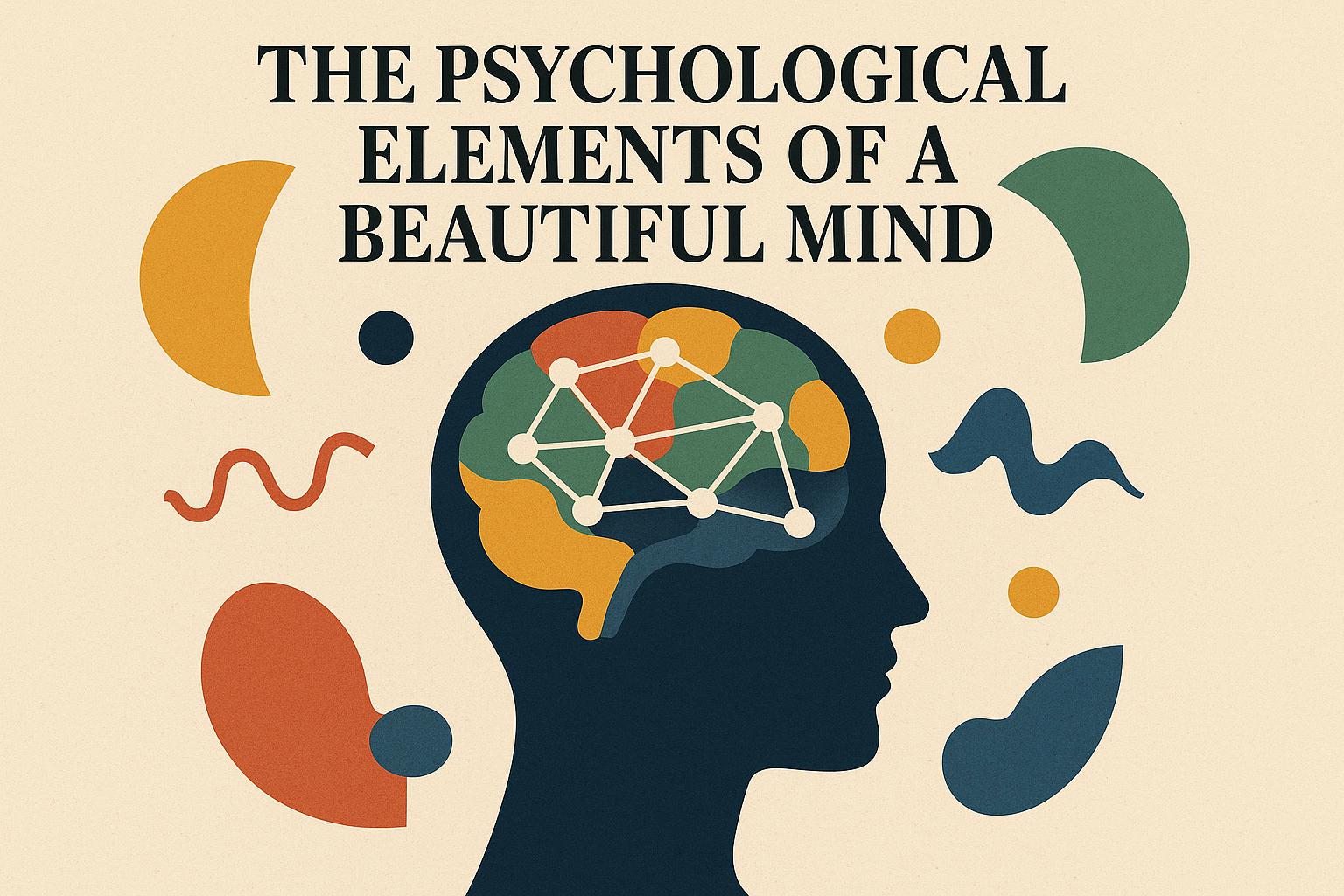Introduction
The film A Beautiful Mind, directed by Ron Howard and released in 2001, is a biographical drama about the life of John Nash, a Nobel Laureate in Economics. The movie, based on Sylvia Nasar’s biography of the same name, delves deeply into Nash’s intellectual brilliance, his struggles with schizophrenia, and his eventual triumph over his mental health challenges. This article explores the psychological elements presented in the film, reflecting both Nash’s personal experiences and broader implications for understanding mental illness.
Schizophrenia: The Core Challenge
John Nash’s battle with schizophrenia is central to the narrative of A Beautiful Mind. Schizophrenia is a complex, chronic mental health condition characterized by distorted thinking, perceptions, emotions, language, sense of self, and behavior. In the film, Nash experiences hallucinations and delusions that significantly impact his professional and personal life. These symptoms are depicted through his interactions with imagined characters, such as Charles, the roommate, and government agent William Parcher.
The Portrayal of Hallucinations and Delusions
Although creative liberties are taken for dramatic effect, A Beautiful Mind effectively demonstrates how hallucinations and delusions can dictate the actions of someone with schizophrenia. Nash’s interactions with his hallucinations are portrayed in a manner that allows the audience to experience the confusion and intensity of his experiences. Despite some inaccuracies for cinematic purposes, these portrayals underscore the real-life challenges faced by those with similar conditions. By dramatizing these symptoms, the film offers an entry point for viewers to attempt to understand the profound impact such experiences can have on an individual’s life and mind.
Cognitive and Emotional Impact
The cognitive elements of Nash’s condition manifest through his brilliant, yet oftentimes erratic, problem-solving capabilities. In the film, his ability to discern mathematical patterns is juxtaposed against his struggle to differentiate reality from hallucination. Emotionally, schizophrenia strains Nash’s relationships, notably his marriage to Alicia Nash. The film highlights the perseverance and support required by family and friends to help individuals manage their condition. It paints a vivid picture of the personal challenges and emotional burden that accompany the condition, influencing not just those diagnosed but also their close networks.
Therapeutic Interventions and Recovery
Nash’s journey toward managing schizophrenia involves various interventions, reflecting the period’s psychiatric practices. While the initial use of antipsychotic medications and electroconvulsive therapy (ECT) are portrayed, the film also touches upon Nash’s personal choice to cope without medication later in life. His strategy to combat symptoms through acceptance and cognitive reinforcement showcases the potential for self-management in mental health recovery. The film captures the evolving nature of mental health treatment, highlighting debates around medication usage and the patient’s autonomy in making treatment decisions.
Support Systems
A key theme in the film is the importance of social support systems. Alicia’s role in Nash’s life is critical; her understanding and resilience provide Nash with a foundation for stability. This aspect of the story aligns with contemporary understandings of mental health, which emphasize the value of community, family, and peer support, along with professional medical therapies. The unwavering support Nash receives is emblematic of the broader need for a collaborative approach to mental health care, which combines professional help with personal support networks.
Insights into Mental Health Awareness
A Beautiful Mind not only represents Nash’s personal story but also contributes to broader mental health awareness. By portraying the life of a highly respected intellectual who grapples with schizophrenia, the film encourages discussions about mental illness in society. It emphasizes that mental health challenges can affect anyone, irrespective of their intellectual or professional achievements. The film aims to dissolve misconceptions surrounding mental illness, inviting audiences to confront their biases and foster a more inclusive and understanding society.
Artistic Representation: Balancing Truth and Drama
The film, while grounded in real events, inevitably takes artistic liberties to enhance storytelling. Characters and events are dramatized or altered to create a cohesive and compelling narrative. This raises important questions about the balance between factual accuracy and engaging storytelling in biographical films. However, despite these creative embellishments, the core message remains clear: the human experience of mental illness is multifaceted and deeply personal. Through the lens of cinema, viewers are offered a platform to witness and reflect on the complexity of living with a condition like schizophrenia.
Conclusion
A Beautiful Mind serves as an important cultural artifact that illustrates the complexities and realities of living with schizophrenia. While its narrative is tailored for film, the core psychological elements it presents are grounded in genuine experiences and therapeutic practices. By increasing visibility and understanding of these issues, the film plays a part in reducing stigma and promoting empathy toward individuals facing similar challenges. It acts as a poignant reminder of the vast spectrum of human experience and the courage required to navigate mental health challenges. For more detailed insights into schizophrenia and treatment options, consider exploring resources offered by mental health organizations.
This article was last updated on: August 31, 2025

